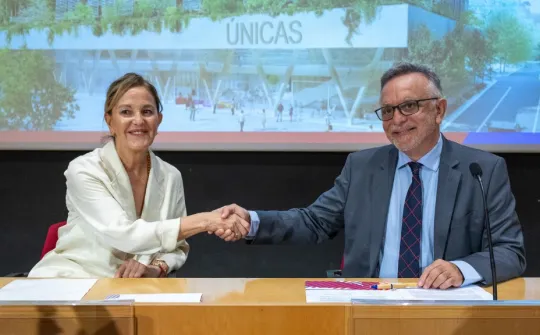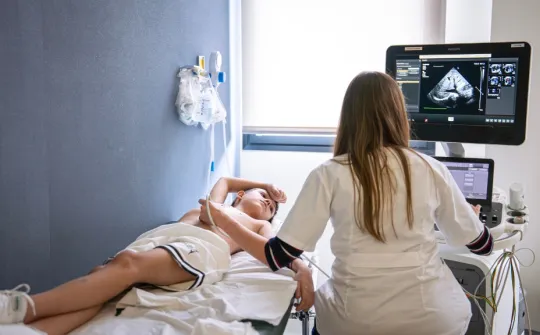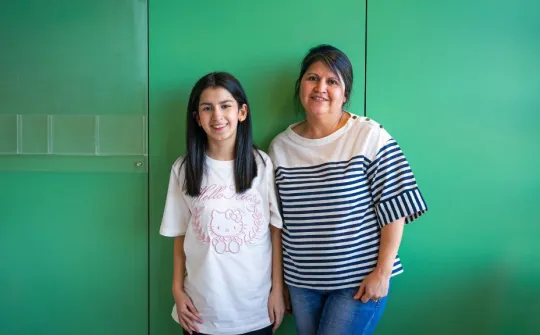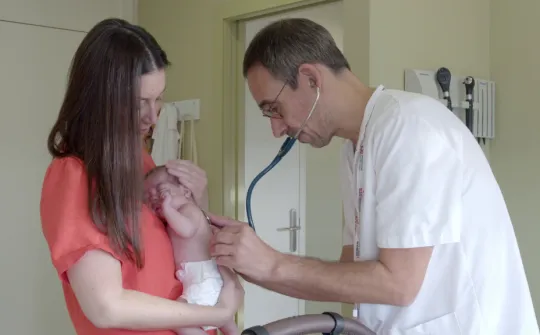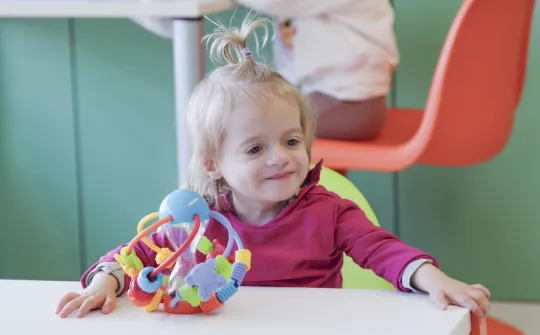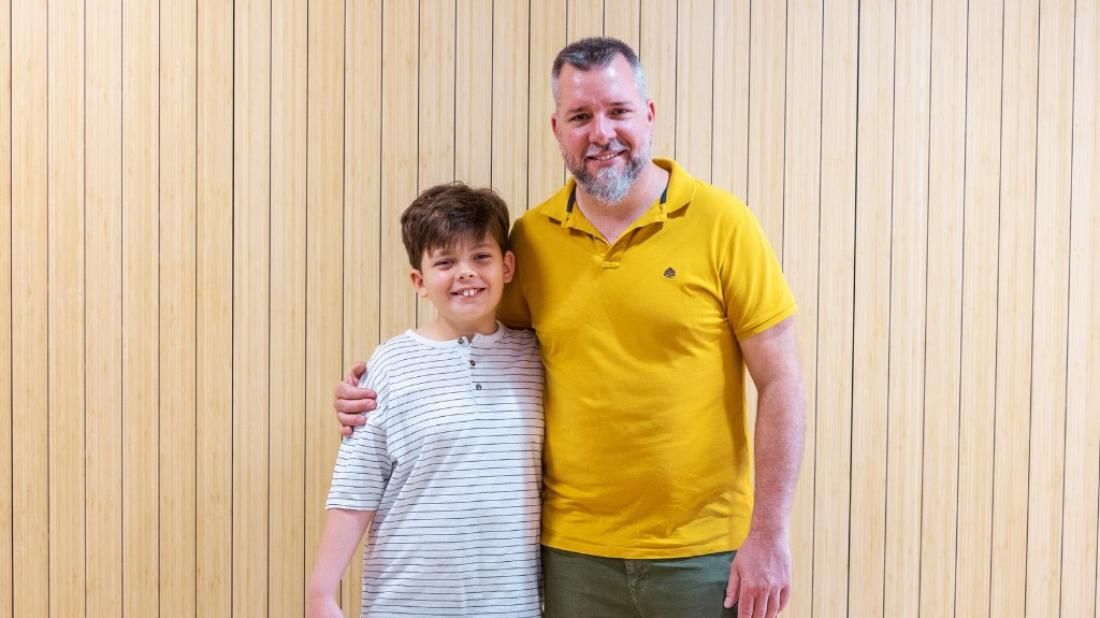
The father of a young boy with an ultrarare disease that caused involuntary muscle contractions in his limbs explains how a deep brain stimulation procedure changed his son's life.
Santiago, an 11-year-old boy from Pamplona, was left unable to walk due to a rare disease, needing a wheelchair to get around for over four months. Now he can walk, run and play various sports again, like any boy his age, all thanks to a complex medical procedure, during which the Neurosurgery team at the SJD Barcelona Children's Hospital implanted a stimulation device in his brain.
Santiago's father, Iván, remembers how everything started during the COVID-19 pandemic. ‘In March of 2020, we noticed that he held his foot strangely, and his toes were contorted. We took him to a neuropediatrician in Pamplona who told us not to worry, that it was all psychological. But months went by and he kept getting worse, and despite insisting over and over, the neuropediatrician just told us the same thing each time.’
Santiago's condition worsened so quickly and intensely that, by the end of the year, he could no longer walk. ‘It was when that we went to another neuropediatrician. He suggested doing a genetic screening, and after seeing the results, he referred us to the SJD Barcelona Children's Hospital, as there were experts on Santiago's genetic disease working there. The same day that we sent the tests to Barcelona, Dr Ortigoza got in touch to see when we could get there,’ continued Iván.
Santiago was seen at the SJD Barcelona Children's Hospital for the first time in February 2021. Darío Ortigoza, Coordinator of the Movement Disorder Unit at the hospital, confirmed that Santiago had an ultrarare genetic disease called DYT-TOR1A, which caused involuntary muscle contractions. According to the father, the disease was already affecting both of his son's feet, his hands, and his tongue.
The boy had to undergo deep brain stimulation. José Hinojosa, Head of the Neurosurgery Department at the SJD Barcelona Children's Hospital explained that ‘with this technique, which was carried out by Dr Santiago Candela and Dr Jordi Rumià, electrodes were placed in Santiago's brain that would stop the abnormal signals stemming from the genetic mutation that causes the disease.’
It is a long and difficult operation, but results are excellent. ‘Dr Candela told us that this operation would change Santiago's life,’ recalls Iván, ‘and it did. He had the operation on 1 March 2021, and just 20 days later he was walking again.’ Santiago improved little by little, and now he can even run.
‘For us, it was a miracle,’ adds Iván. ‘Before the operation, we had been carrying around the house.’ Thinking back, Santiago tells us that ‘for a while at school, when I needed my wheelchair, one of my teachers had to carry me to the playground and would push me around in my chair while my friends were playing. Being able to walk again made me so happy.’
For Santiago's family, getting an accurate diagnosis is ‘fundamental’. ‘When they don't give you a diagnosis, or they give an incorrect one, you feel helpless. When we came to the SJD Barcelona Children's Hospital, it was the exact opposite. We felt validated because what they were telling us matched up perfectly with what we were seeing our son go through. They knew that because they knew about the disease, because they were experts,’ stresses Iván.
For Carme Fons, Head of the Neurology Department at the SJD Barcelona Children's Hospital, ‘Santiago's case is yet another example of what we hope to offer in the future at the SJD precision medicine facility: offer personalised treatment to children with rare diseases.’
